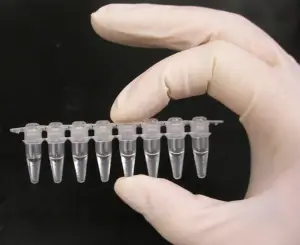
Polymerase Chain Reaction (PCR) is a relatively simple and inexpensive tool that you can use to focus in on a segment of DNA and copy it billions of times over. PCR is used every day to diagnose diseases, identify bacteria and viruses, match criminals to crime scenes, and in many other ways. This article will discuss 10 interesting facts that I guarantee will have you digging and searching for more information on the PCR.
Facts about Polymerase Chain Reaction
Fact 1: PCR techniques were originally described in the 1960s, were popularized during the late 1980s and early 1990s within the biotechnology industry, and today are routinely used in medical diagnosis and in environmental detection of microorganisms.
Fact 2: PCR is a laboratory method that generates multiple copies of a specific (target) DNA sequence, if present in a sample, representing microorganisms or groups of related microorganisms known to biodegrade contaminants.
Fact 3: Reverse transcriptase PCR (RT-PCR) is a laboratory method that transforms RNA associated with biodegradation into complementary DNA (cDNA) that is then detected by PCR.
Fact 4: Additionally, PCR can be used to amplify DNA sequences for use in further analysis of the sequence by other EMD techniques such as quantitative polymerase chain reaction (qPCR), microarray analysis, and microbial fingerprinting techniques such as denaturing gradient gel electrophoresis (DGGE). For more information, see the qPCR, Microarrays, and Microbial Fingerprinting Methods Fact Sheets.
Fact 5: PCR has been used to detect microorganisms capable of degrading contaminants such as petroleum hydrocarbons, pentachlorophenol, perchlorate, polychlorinated biphenyls (PCBs), metals, radionuclides, and chlorinated solvents. PCR also has potential applicability in other environmental monitoring efforts, such as tracking of fecal microorganisms, so-called ‘œmicrobial source tracking,’ and identifying and tracking microorganisms potentially related to chemical compounds originating from industrial or energy-related activities.
Fact 6: PCR can be used to detect the presence of either (a) a specific microorganism or group of microorganisms that are known to be able to biodegrade a specific contaminant or group of contaminants or (b) DNA sequences (genes) that regulate the production of enzymes (proteins) that biodegrade or partially biodegrade these contaminants. The genes a microorganism possesses not only enable identification of the microorganism but also determine which enzymes that microorganism can produce and therefore which contaminants it can biodegrade.
Fact 7: When PCR is used to target a specific gene or microorganism, data from PCR are reported simply as present/absent for the target sequence. However, when the products from PCR are used in another EMD method, more detailed information is available.
Fact 8: PCR results can be affected by the presence of some metals or humic acids in the environmental sample. Samples exhibiting PCR inhibition should be readilyidentified with basic quality assurance (QA)/quality control (QC) procedures. Furt hermore, inhibition can often be eliminated with minor modifications to the DNA extraction procedure.
Fact 9: Sample matrices that can be analyzed by PCR include soil, sediment, groundwater, and filters. Sampling for microbiological samples can be easily incorporated into routine environmental monitoring programs.
Fact 10: The development of PCR analysis is based on known biodegradation pathways and gene sequences. With ongoing research, additional PCR analyses will be developed to expand the applicability of the technique to other contaminants and newly identified biodegradation pathways.
As is stated throughout the article, PCR is very interesting as it plays an important role in the saving of lives as researchers work hard every day to detect ways in curing diseases that affect us.










June 19, 2015 7:21 am
I like it! Well summarised and understandable